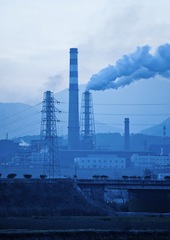Is Asia’s Economic Miracle Over?
After the excitement of rapid growth in the 1990s and 2000s, what do Asia’s prospects look like now?
May 2, 2013

The slowdown in China’s sustainable growth rate may be only half competed. From 7.5-8% currently, it will most likely decelerate further to 4-5% over the coming decade.
As this happens and as the commodity-intensity of China’s growth model declines, there will be profound implications for commodity producers.
The Slowing of China
China and the End of the Magic of Extrapolation
Is Asia’s Economic Miracle Over?
China: Hitting a BRIC Wall
This also applies to the complex manufacturing supply chains that run throughout Asia.
But growth in emerging Asia is already slowing down. This corroborates the view that if there was anything miraculous about Asia’s economic performance from the 1990s to the 2000s, it is now history. How should we assess Asia’s prospects now?
In spite of the financial crisis in Asia in the late 1990s, growth in developing Asia recovered strongly reaching a peak of over 11% in 2007. Subsequently, it has slipped to 6-7%. That is roughly where it was for much of the 1990s as a whole.
Asia, excluding China, has now returned to growth of around 5.5%. The IMF predicts more or less stable growth around this level for the next several years.
However, in my view, there are six reasons why Asia will have to look to reform, rather than miracles:
1. China’s own economic performance may be less robust than is widely assumed.
If China’s investment share in GDP slides back by, say, 10% to “only” 40% by 2020 (from the current 50% share), this will have very direct consequences for the rest of Asia.
The cost to growth, according to the IMF, could be about 1-2% of GDP in the Philippines and Indonesia, 4-6% of GDP in Malaysia, Korea and Thailand, and 10% in Taiwan. Inevitably, there would be additional multiplier and spillover effects.
2. The export-centric models of ASEAN countries and to a degree, of larger nations, such as China, Korea and Taiwan, have become flawed in the wake of the Western financial crisis.
It is often suggested that South-South trade, or trade between developing countries, will substitute for weaker trade with the West.
But even though developing countries now buy more than half of one another’s exports, a lot of this trade is China, commodity-related and the product of deeper supply chains.
According to the Asian Development Bank, roughly three quarters of Asian exports end up outside the region, predominantly in Europe and the United States.
3. Asia’s ‘financial’ indicators are flashing warning signs, even if there does not appear any immediate threat of instability, and many financial regulation lessons from the Asia crisis have remained ‘learned’.
But excluding China, the ratio of credit to GDP has risen to over 100% — higher than it was in 1997. Also, land loan to deposit ratios in Asian banking systems are rising significantly again.
4. Asian countries, including China, are now richer and more complex. Their future prospects will depend more on total factor productivity (TFP), or the immeasurable phenomenon that boosts GDP through technological and organizational efficiencies, and the effects of robust institutions.
TFP rose to nearly 2.5% in the 2000s, but has since slowed. To strengthen it, Asian governments will need to spur innovation and other new ways of replicating the benefits conveyed in the last decade or so.
That growth was achieved by the spread of educational attainment levels, electrical power consumption, air transportation, telecommunications and internet usage, and higher value added exports.
5. What about India? Asia’s soon-to-be most populous nation has yet to harvest its so-called demographic dividend.
India’s working age population is predicted to grow by 350 million by 2050. That is an increase that’s larger than the stock of working age people in Western Europe today.
But as things stand, India isn’t going to be a game-changer for Asia. After a short-lived 10% growth burst in 2010-11, India’s growth has halved.
The demographic dividend will only accrue if India can raise its game significantly on the job creation front. That is a big challenge given that about a quarter of all persons deemed to be employed are also deemed to be at or below the poverty line.
This is a failure of labor market governance. There are other failures, notably with regard to India’s construction programs and adequate infrastructure, as well as export growth and diversity.
There are also the country’s twin deficits, with external and public budget deficits of around 9-10% of GDP.
These important economic deficiencies can only be remedied by significant political and institutional reforms.
Moreover, India’s fragility is attributable in large measure to the degradation of state institutions.
6. Not only is income inequality rising in Asia, as elsewhere, but it is also becoming a constraint over economic growth.
Low-income inequality empowers a broader society, which keeps the political system open, and both are considered important characteristics of sustainable, inclusive growth.
Extremes of inequality are widespread in Asia, and in most cases, they are at levels higher than in any of the countries that have succeeded over the last 50 years in graduating out of the middle income group of countries to the select high income universe.
It has been argued that Asia’s miracle occurred because Asians came to understand, absorb and implement Western best practices — from free market economics to modern science and technology and from meritocracy to the rule of law.
For some countries, more or less, this assertion is unquestionably true, complementing vigorous resource mobilization.
But the latter has now been exploited or is more difficult.
In addition, Asians face a less benign global trade and economic environment, as well as heightened economic and political security risks in the region.
Without regional institutions that can do for Asia what NATO and the OECD did for the West, and without strong reform initiatives to sustain high domestic growth, many Asian miracle countries could get stuck in a middle-income trap.
Editor’s Note: This is the second of a three-part series. Read Part I here. Read Part III here.
Takeaways
Asia will have to look to reform, rather than miracles.
Without regional institutions to do for Asia what NATO and the OECD did for the West, many Asian states could get stuck.
Asia's "financial" indicators are flashing warning signs, even if there is no immediate threat of instability.
To power growth, Asian governments will need to spur innovation.
India's economic deficiencies can only be remedied by significant political and institutional reforms.

